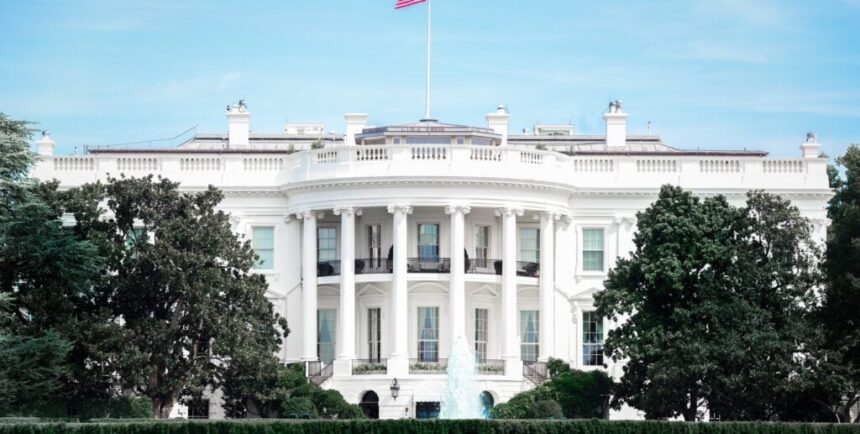Last month, the Biden-Harris administration announced a series of actions designed to facilitate the conversion of vacant office properties for residential use. In Q2 of this year, the nationwide office vacancy rate hit 18.2%, a 30-year high, according to CBRE.
Meanwhile, the U.S. is facing a severe shortage of available housing. As of Q4 2020, Freddie Mac estimates a deficit of 3.8 million units required to meet housing demand and keep the vacancy rate at target. The National Low Income Housing Coalition also estimates the country is short 7.3 million affordable rental homes available to extremely low-income renters.
Supporting office conversions with federal funding and guidance seems like a course of action that could solve both problems—but challenges make it infeasible to convert many commercial properties to residential buildings. Even if repurposing every office building made sense logistically and financially, doing so would only supply a small share of the housing the country needs. The new funding, low-cost financing, and guidance may assist with the redevelopment of some properties that would otherwise sit empty, but further action will likely be needed to meaningfully increase the supply of housing.
The Biden-Harris Administration’s Plans
Actions intended to support the redevelopment of office buildings include:
- Low-cost financing for housing developments near public transportation: The Department of Transportation has released guidance on how $35 billion in loans can be accessed to fund housing projects near public transit, including repurposing office space. The White House fact sheet notes that the available low-cost financing may encourage zoning improvements among state and local governments.
- No-cost transfer of properties from transit agencies to affordable housing developers: DOT will allow transit agencies, which often own real estate near transit hubs, to transfer unused properties to affordable housing developers at no cost.
- HUD funding for office-to-residential conversions: With the new program, $10 billion in funding from the Community Development Block Grant will now be available for acquiring and converting commercial properties to housing and mixed-use projects. Plus, conversion projects are now eligible for the Pathways to Removing Obstacles to Housing program, which sets aside $85 million to remove obstacles to affordable housing development.
- Resources, training opportunities, and technical assistance: The White House has released a Commercial to Residential Conversions Guidebook detailing 20 federal programs that can assist developers with grants, low-cost loans, loan guarantees, and tax incentives that may make conversion projects financially viable. Accompanying training workshops will be hosted this fall. A Treasury report also details available tax incentives for redevelopment, which include deductions for energy improvements. The available incentives fall short of a credit for conversion costs, as previously proposed in the Revitalizing Downtowns Act, which died in Congress.
Benefits for Commercial Real Estate Investors
While not all office buildings are ripe for conversion, some projects may be cheaper or less time-consuming than a new build. The Bipartisan Policy Center notes that converting older, smaller buildings with plenty of light, working windows, and high ceilings may save investors up to 30% relative to demolishing and rebuilding. Conversions tend to be easier on the environment and can be ready to rent 12 months sooner than new developments.
For some commercial property owners, converting a vacant office space may be financially advantageous, especially when compared to selling. Barclays analysts estimate that office building values have already declined between 20% and 30% from their peak, and as vacancy rates are now higher than after the global financial crisis, further declines are anticipated. The new low-cost financing options available could enable investors to convert their low-value office properties to revenue-earning mixed-use and multifamily properties.
Government support has been effective in some cities at facilitating a meaningful increase in the housing supply through office-to-residential conversions, but the best results occurred when there was a direct subsidy or tax break. For example, Philadelphia’s 10-year tax abatement for conversions resulted in a 54% population increase in Center City between 2000 and 2020 through the repurposing of more than 40 office buildings.
The new federal plans to support conversions don’t include similar tax incentives. And investors face a variety of challenges when considering office building conversions.
Obstacles to a Meaningful Impact
Some cities are in desperate need of more housing, but because downtown areas take up just a small percentage of land in cities, converting empty office buildings would barely make a dent in the undersupply of housing.
Brookings provides a couple of examples: Converting all viable office buildings in Denver would only create about 1,500 new units, which would provide, at most, 11% of the housing required to eliminate the shortage in Denver. In San Francisco, there are only 12 office buildings suited for multifamily conversions, which would supply the city with about 2,700 units. That would satisfy just over 3% of the city’s housing needs.
The reason so few office buildings are suitable for repurposing is that the high cost of making the necessary physical changes can’t be recouped with rental revenue. For example, deep floor plates mean the spaces are away from natural light and may not be usable as living spaces. And changing the plumbing to add more bathrooms is rarely a straightforward process.
These changes may cost up to $500 per square foot, yet multifamily housing only brings in an average of $0.50 more per square foot in net operating income when compared to office buildings, according to 2022 estimates from CBRE.
Getting zoning approval can be a barrier as well. While the Biden administration’s policy statement is intended to encourage “state and local governments to improve their zoning,” it won’t happen overnight.
And there’s another challenge for investors: Convertible buildings may be located in areas that don’t have important amenities, like grocery stores and schools, which make them undesirable places to live. In fact, CBRE estimates that 80% of the decline in occupancy over the last few years was concentrated in only 10% of the country’s office buildings—and those buildings tend to be located in downtown areas plagued by high crime rates and a lack of neighborhood amenities.
Mixed-use retail and residential conversions could be an option in these areas. A variety of new businesses could attract residents. While mixed-use projects make up a smaller share of conversions than office-to-multifamily projects, they are rising in popularity, and CBRE suggests mixed-use conversions could have economic benefits for cities.
Sean Slater, senior principal at RDC, told BiggerPockets in an interview this spring, “Mixed-use is the past, present, and future,” noting that mixed-use conversions would “create a more stable market.”
The Bottom Line
The Biden administration’s new policies and guidance may make it feasible to convert more office buildings, but the projects enabled by low-cost financing and other incentives will likely be insufficient to meet the housing needs of cities. Further, revitalizing downtown areas will require more than just adding new housing.
Still, some property owners may find that the new policies make office-to-residential conversion projects a viable solution as more office leases expire.
Ready to succeed in real estate investing? Create a free BiggerPockets account to learn about investment strategies; ask questions and get answers from our community of +2 million members; connect with investor-friendly agents; and so much more.
Note By BiggerPockets: These are opinions written by the author and do not necessarily represent the opinions of BiggerPockets.









